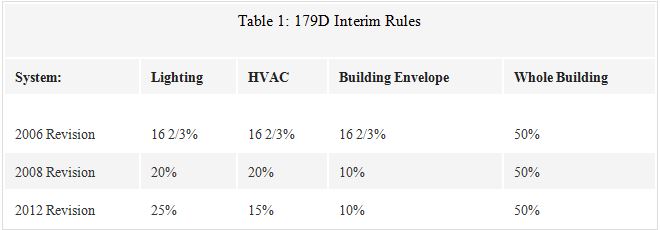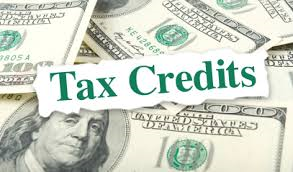
Energy efficient tax deduction for commercial buildings
The 179D Energy Policy Act certification analyses the tax deduction achieved from the installation of energy-efficient assets, including HVAC, building envelope, and lighting. The building may qualify for up to $1.80/sq. foot ($0.60 per square foot for each system); however, partial deductions are allowed for lighting. The deduction is available for newly constructed or energy renovated commercial buildings as well as apartment buildings 4 stories or more. Commercial property owners who pay taxes can claim the benefit with the exception of government-owned buildings where the tax deduction may be allocated to the designer.
Why Choose The R Group for Your Energy Certification?
TRG has provided and performed accurate energy modelling since 2008, it is essential requirement to receive your section 179D Tax Credit. Our precise documentation meets and sometimes exceeds the standards required by the Department of Energy and the IRS assuring you that the documentation can withstand the toughest scrutiny.
How Much Is The 179D Energy Policy Act Deduction?
- Maximum Deduction– $1.80 per square foot = 50% reduction in total annual energy and power costs (compared to a reference building that meets the minimum requirements of ASHRAE Standard 90.1-2001) not to exceed the amount equal to the cost of energy efficient commercial property placed in service during the taxable year.
- Partial Deduction– $0.60 per square foot / per system for reduction of energy consumption through building envelope, HVAC, and Lighting.
- Partial Deduction– (interim lighting) From $0.30 to $0.60 per square foot = 25 – 40% reduction in lighting power density (50% in the case of warehouses)
What qualifies?
- Commercial buildings (any size)
- Apartments, four or more stories, for lease
- Commercial energy renovations
Who qualifies for the deduction?
- Building owner at the time of building improvements
- Public Buildings – The owner may allocate the deduction to the designer (architect, engineer, contractor, environmental consultant, or energy services provider) for the taxable year that includes the date on which the property is placed in service
What are the Requirements?
Must reduce total annual energy and power costs with respect to the interior lighting systems, heating, cooling, ventilation, and hot water systems by 50%. However, partial deductions are allowed. Energy simulation is required to justify the deduction; inspection and testing must be completed by a qualified engineer or contractor registered in the jurisdiction. A breakdown of the percentage of energy reduction per system is in the chart below.

Looking for Qualifying Specifications?
Lighting
Lighting is the only component that can partially qualify for the deduction. Depending on the reduction of Lighting Power Density (LPDs), the owner/designer can qualify from $0.30 – $0.60 per square foot. Lighting is dependent on square footage, building type, bi-level switching, and energy consumption. There are also multiple ways for qualifying a property based on the code revisions. Please contact us to provide a complimentary energy review of your project.
HVAC
A project must have new equipment installed which can include Air or Water Cooled Chillers, Rooftop Units, PTAC Units, Geothermal Systems, or High-Efficiency Unit Heaters. Certain options will enhance your property’s likelihood of qualifying. These would include VAV systems, VFD’s, economizers, Energy Recovery Ventilation, and High SEER or EER Ratings.
Building Envelope
The building envelope can be the most difficult system to qualify in a renovation/retrofit. Typically, if at least two of these items have been upgraded it may qualify. These systems include: Windows, Roofing Improvements, Window film or tint, Doors, and Wall-Roof or Floor Insulation.
What is the time frame for eligibility?
Properties placed in service (New Construction or Renovation) after December 31, 2005 through December 31, 2016.
What is needed from the builder?
- Current full set of architectural plans that include all specifications
- Energy compliance documents for lighting, HVAC, and envelope (Title 24 or IECC)
- Equest/EnergyPro File – computer file used to generate T-24 documentation
- A contact person and phone number
What do I get from a 179D review?
- Federal Tax Deduction (FTD) certificate package – requires documentation for deduction
- Review of existing T-24 or IECC to verify compliance with current code requirements
- Review of the building’s lighting, HVAC, and envelope systems for FTD qualification
- Contract for analysis and certification documentation
How do I claim the deduction?
- The deduction is taken on the “Other Deductions” line of the taxpayer’s return
- Tax returns may be amended going back three consecutive tax years
ETS will provide you with a summary of compliance with a Department of Energy certified software and engineer or contractor verification documentation. According to your preference, ETS will provide all documentation in either paper or electronic format.
Free Tax Benefit Assessments
TRG will review your project on a Complimentary Basis. Projects between 1/1/2006-12/31/16 are eligible.
- For new construction, we typically look for the Architectural, Mechanical, Electrical and Plumbing drawing sets.
- For retrofits we look for information on the project, like project cost, spec sheets, energy saving estimates as well as the project address and any drawings (New or Pre-Existing).
Upon completion of our complimentary review, we will estimate your project’s tax deduction as well as provide you with a fixed fee quote for your project. We look forward to hearing from you to reviewing your project.


